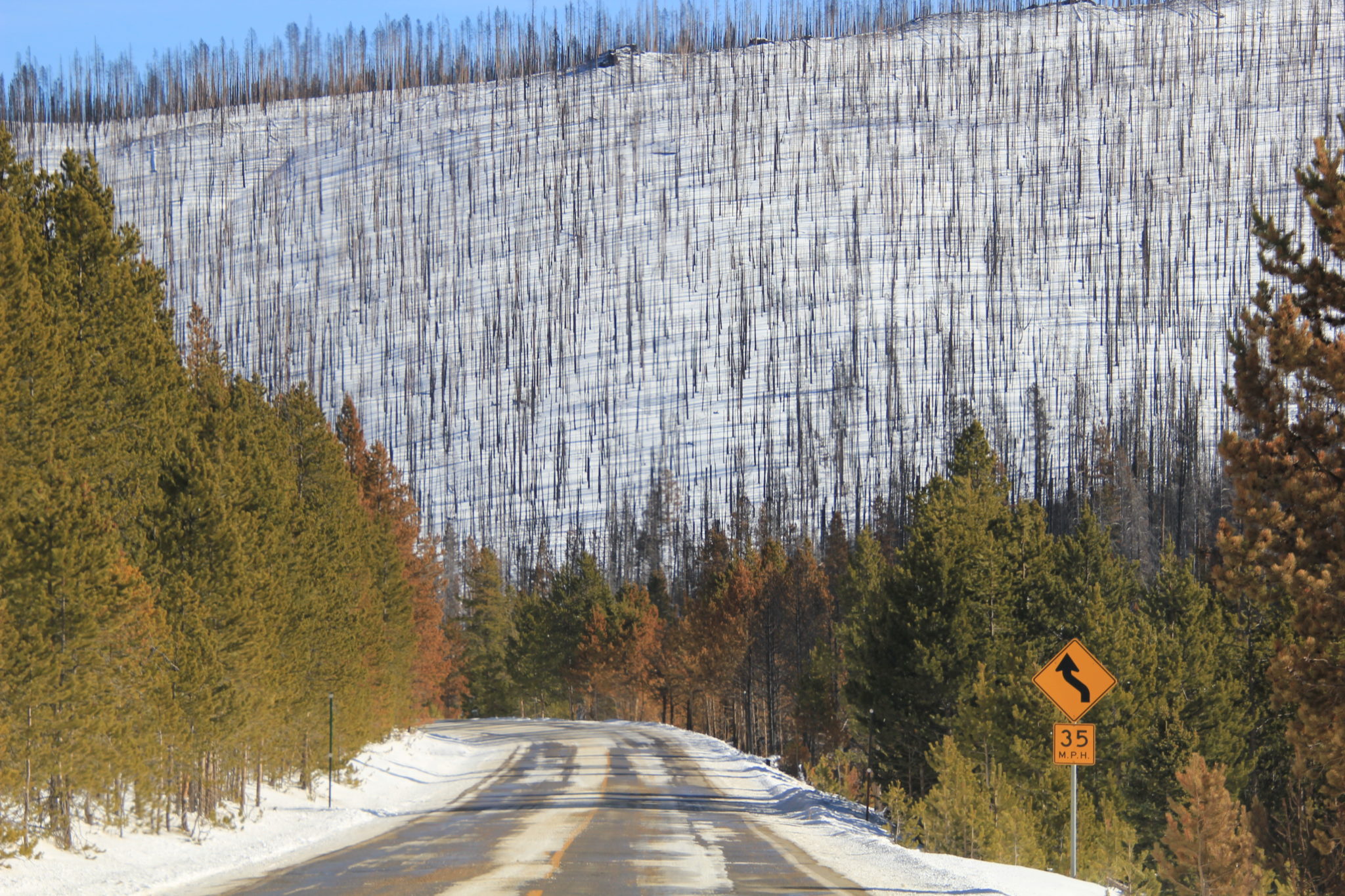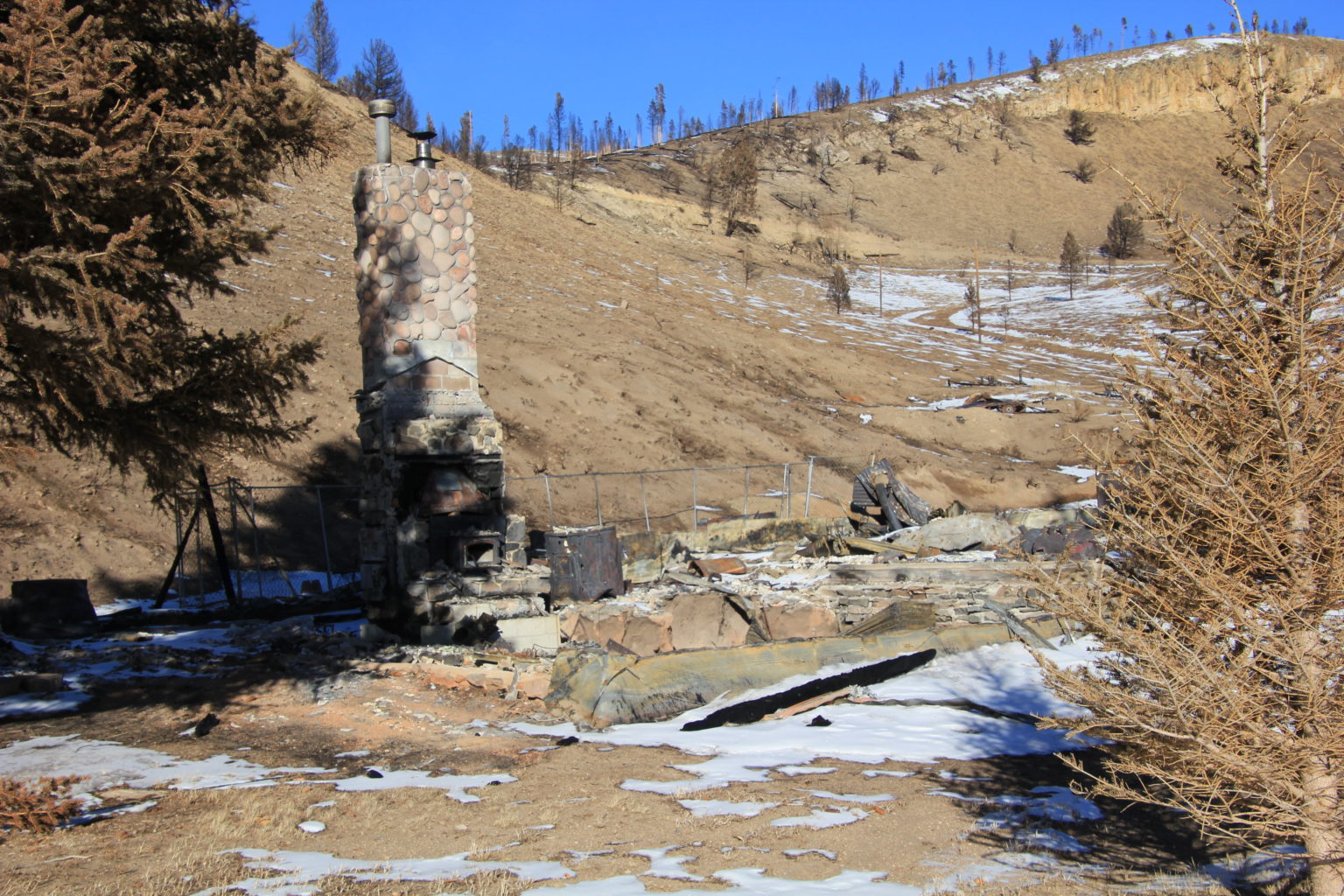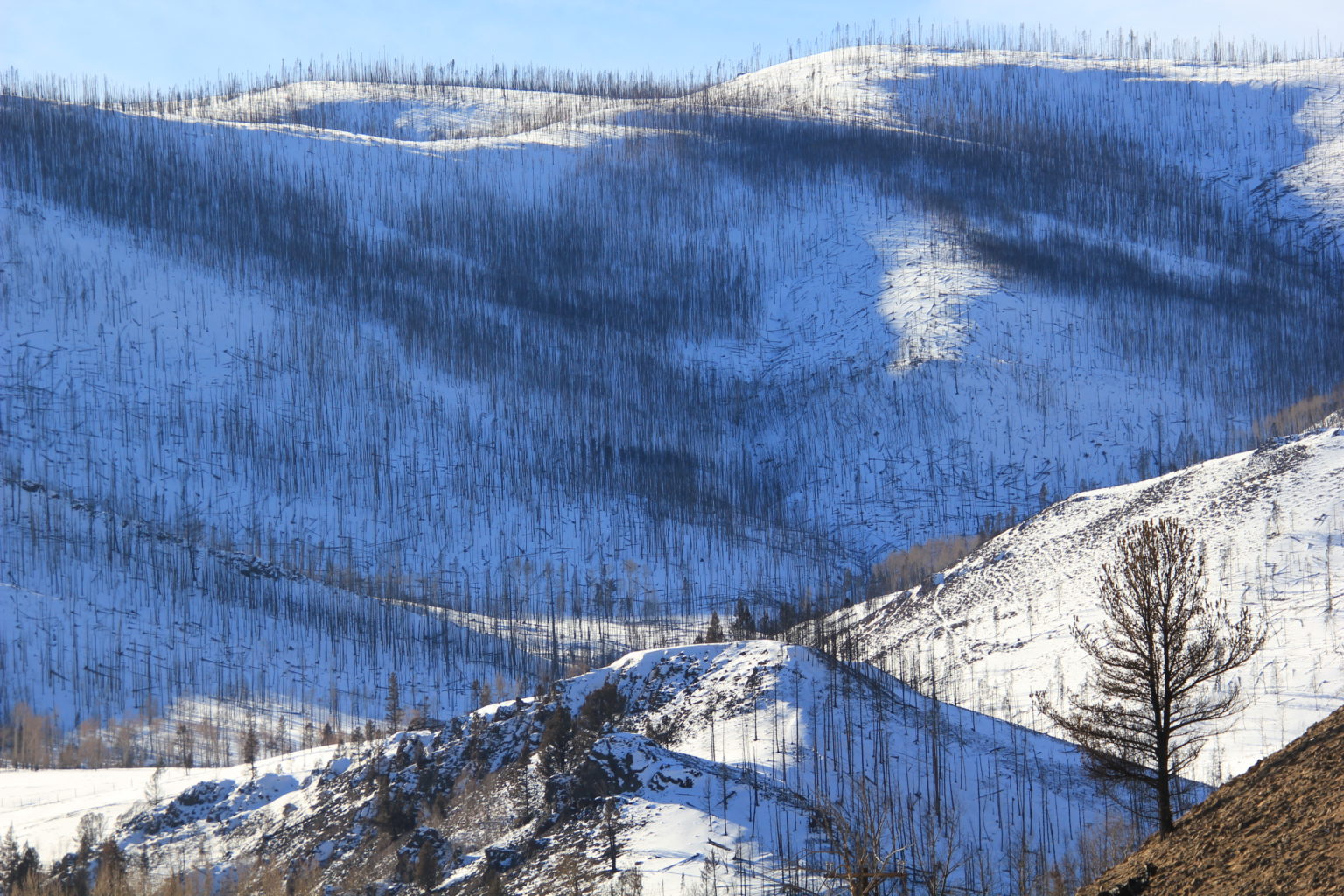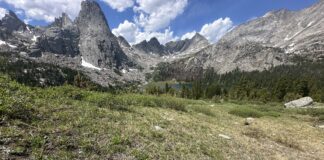
By Allen Best
KREMMLING — For some ranchers in Troublesome Valley, the worst impacts of the wildfire that began near there in October might not arrive until summer — or even summers beyond.
Experts say the greatest danger of sedimentation from the East Troublesome Fire will occur during and after a hard rain, especially of an inch or more. That is when the severe soil damage from the fire will cause sediment to wash into the east fork of Troublesome Creek and into a diversion ditch used to irrigate 10,000 acres of hay.
“It’s a real concern for us,” said Kent Whitmer, one of seven ranch owners who get water from the ditch owned by the East Troublesome Mutual Irrigation Co.
Whitmer said he most fears sediment filling the ditch so badly that it overflows.
“That would be disastrous,” he said.
Agricultural and municipal water users will see broad, lingering effects of the 193,812-acre fire.
The East Troublesome Fire, which had been burning east of Colorado Highway 125, exploded on the afternoon of Oct. 21, driven by 70 mph winds. In all, the fire grew 100,000 acres in 24 hours, eventually becoming the second-largest wildfire in the state’s recorded history. The fire was formally designated as contained Nov. 30, although small plumes of smoke could be seen in the golf course area as recently as Christmas Day. All but about 5,000 acres of the fire burned in Grand County.
Denver Water may offer lessons useful to water managers, who will be dealing with impacts from the East Troublesome Fire for years, perhaps decades. Denver Water has struggled with sediment and debris clogging its two major reservoirs in the foothills southwest of Denver. The fires that caused problems for those reservoirs — Buffalo Creek in 1996 and Hayman in 2002 — fried soils, removing their ability to absorb moisture. Sediment has been washed up to 11 miles into Strontia Springs and Cheesman reservoirs, pushed by water during summer cloudbursts.
Denver Water has spent $28 million in reservoir dredging, facilities repair and landscape-restoration projects. It discovered that debris and sediment can travel downstream to cause problems in critical water infrastructure. At Strontia Springs, Denver Water dredged for sediment as recently as five years ago but may need to do so again this year.
“Dredging is very costly,” Denver Water watershed scientist Christina Burri said during the recent post-fire water impacts webinar. Retrieving sediment and debris can be challenging, and then there’s the issue of what to do with the debris. “Do you pile it? Do you burn it? Where can you take it?” Burri said.
The East Troublesome Fire might produce fewer problems. A fire assessment called burned-area emergency response was conducted by U.S. Forest Service land managers and shows mostly low to moderate soil burn severity, suggesting lesser impacts to water quality.
But water managers still expect significant challenges come spring, when melting snow produces debris and sediment that can clog bridges, culverts and reservoirs.

Assessing the damage
The fire came through in October “so quickly that it didn’t have a chance to do long-term scarring of the soil,” said Jeff Stahla, public information officer for the Northern Colorado Water Conservancy District. “However, this is still a sobering assessment because it really lays out the challenge we have going forward.”
Northern Water operates the Colorado-Big Thompson diversion project, which employs Willow Creek, Granby and Shadow Mountain reservoirs as well as Grand Lake to deliver water to more than a million people and 615,000 irrigated acres along the northern Front Range and in northeastern Colorado.
The district estimates the fire burned as much as 94% of the Willow Creek watershed, 90% of the area drained by Stillwater Creek, 29% of the Colorado River drainage above Shadow Mountain Reservoir and 42% of the North Inlet watershed. A more detailed assessment will be needed in the spring after snow has melted, Strahla said.
“It’s not as bad as Hayman, but that doesn’t mean it’s not bad,” Stahla said, referring to the 138,000-acre fire in 2002 that was the largest forest fire in Colorado’s recorded history until last year. In size, Hayman was eclipsed by the three Colorado fires in 2020: East Troublesome, Cameron Peak and Pine Gulch.
In assessing the damages caused by the East Troublesome Fire, resource specialists estimated 5% of the soil suffered high severity, 48% of it moderate severity and 37% of it low severity burns. Within the fire perimeter, 10% of the land was unburned.
The mapping for the 22,668 acres of the East Troublesome Fire within Rocky Mountain National Park has not yet been released.
Soil in severely burned areas has lost its structure, as the fire burned the forest litter and duff, weakening the roots of trees and other material that hold soil together.
Areas of severe damage include the basin drained by the east fork of Troublesome Creek, where the fire was first reported Oct. 14. There, the fire hunkered down, moving slowly but burning most everything. Other notable severe burn areas are near Willow Creek Pass, between Granby and Walden, and a gulch immediately north of Windy Gap Reservoir. Some areas near Grand Lake burned with surprising severity.
Erosion in high or moderate soil burn areas depends on the specific characteristics, such as the slope and soil texture, of each area, according to the burn report.

Watching the water
Impacts to drinking water in Grand County will vary. Well owners generally should have no problems with the debris.
“These folks will want to make sure that wellheads and components are not damaged, to test for coliform bacteria before drinking the water post-fire and to treat it if necessary,” said Katherine Morris, water-quality specialist for Grand County. “If a well is located in an area known to be down-gradient from an area where homes burned, it may be prudent to ensure that your water treatment is adequate.”
At Grand Lake, the town draws water from 80-foot wells.
“We have not seen anything yet,” said Dave Johnson, the water superintendent for Grand Lake. He said he doesn’t expect problems but that the water will continue to be monitored, as it has been.
But Grand Lake’s microhydro plant could have problems. Located on Tonohutu Creek, the small plant constantly generates 5 kilowatts of electricity used in treating the town’s domestic water.
“We can only filter out so much debris before we have to close the intake,” Johnson said.
In that case, the water treatment plant will be operated solely by electricity from Mountain Parks Electric.
Hot Sulphur Springs, which draws water from wells that tap the river aquifer, will be the only town in Grand County with municipal water supplies directly impacted by the fire. Kremmling also can tap the Colorado River, but it does so only in emergencies.
Hot Sulphur Springs Mayor Bob McVay said his town expects challenges when the snow melts this spring, producing ash-laden water and debris. The town already has set out to take precautions, but it’s not yet clear what will be required.
Upgrading of the filters in the town’s water treatment plant, a project that began a year ago, probably will be completed in January, providing duplicate filtering systems. But that might not be enough. Secondary wells in the groundwater along the river remain an option.
In Troublesome Valley, Whitmer hopes to consult the expertise of the Natural Resources Conservation Service about how to mitigate effects of the fire on the irrigation ditch. He also wonders whether beaver dams in the East Fork will trap at least some sediment.
For Northern Water, this was just one of several fires affecting its operations in 2020. It was impacted by fires on both sides of the Continental Divide, including the Cameron Peak Fire, the state’s largest wildfire, which affected the Poudre River and other creeks and drainages.
Stahla said managers attempt to prepare for wildfire and other contingencies, but they did not prepare for such a severe wildfire season.
“If you had come to us with a scenario that there is wildfire burning above Grand Lake, above Estes Park and throughout the Poudre River Basin, we probably would have pushed back, thinking that’s a little too over the top,” he said.
Aspen Journalism’s water desk is funded in part by the Catena Foundation. This story ran in the Jan. 16 edition of the Summit Daily News and the Jan. 15 edition of Sky-Hi News.
Editor’s note: A previous version of this story misspelled the name of Northern Water’s public information officer. It is Jeff Stahla, not Strahla.
The Water Desk’s mission is to increase the volume, depth and power of journalism connected to Western water issues. We’re an initiative of the Center for Environmental Journalism at the University of Colorado Boulder. The Water Desk launched in April 2019 with support from the Walton Family Foundation. We maintain a strict editorial firewall between our funders and our journalism.





